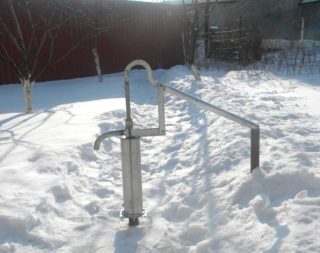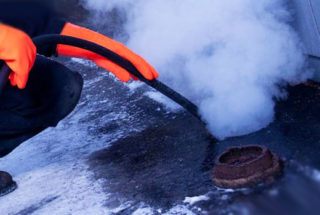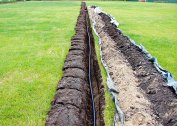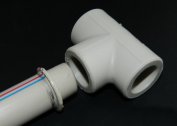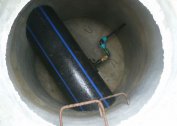In suburban areas, owners often resort to drilling their own wells. Due to this, it is possible to create an autonomous water supply system. However, there are frequent cases when the well freezes. You need to deal with the problem competently and in a timely manner, otherwise the house will be left without water for the whole winter. Pipes may also break.
Well freezing points
The entire column of water in the casing cannot be frozen, since the depth of glaciation of the soil in the coldest regions reaches 2-3 meters. Below this level, the soil already has a positive temperature, which means that the liquid in it physically cannot take a solid form.
More often the well freezes in such areas:
- poorly insulated caisson - a protective chamber above the tip of the source;
- casing pipe at the level of freezing soil (individually for each region);
- water supply pipes from the caisson and further provided that they are insufficiently insulated.
When the system freezes, all metal elements fail. It can be drives, ball valves, etc.
Effective ways to defrost a well
You can deal with ice in different parts of the downhole equipment in various ways. Effective methods:
- Hot water. It is used to defrost the caisson and the pipeline from it to the house. It is necessary to act extremely carefully. The sharp effect of high temperatures on the icy parts of the system can provoke a rupture of the pipes, the formation of microcracks on them. Therefore, first, all frozen places are wrapped with rags dipped in cold water. Then it is watered first with liquid at room temperature and then the degree is gradually increased. Slow warming up with hot water gives good results with a patient approach.
- Brine. So you can defrost the well in the country or in a full-fledged cottage village. This is the most gentle way of influencing ice. It is necessary to make a strong saline solution in hot water (50-60 degrees). The finished composition is gradually poured into a frozen system. Salt corrodes the ice, the cork leaves.
- Blowtorch (torch). A similar method is good for metal elements of a borehole water supply. Blowtorch slowly warm the place of icing. If water has frozen in polymer pipes, the burner must be operated with extreme caution so as not to melt the plastic.
- Electricity. The method is used only for pipes frozen in the ground. It is necessary to drive a metal rod into the frozen soil in the area where the icy pipeline is located. A wire is thrown at the end of the protruding pin and plugged into the network. Frozen earth conducts current well, as a result, the soil warms up, and with it the pipes. In turn, soil with positive temperature no longer conducts electricity. It will take about 24 hours to warm up 6 m2 and to a depth of 90 cm (it all depends on the outdoor temperature). The method is energy-intensive, but very effective. The main thing is that the metal pins do not touch the soil of iron or polymer pipes. The length of the rods should be below the level of freezing of the soil.
- Making a campfire. The method is used only for piping in the ground. Bonfires are organized along it from above, which slowly lead to thawing of the soil inland. In parallel, the pipes thaw. The resulting heat can be covered with slate sheets to retain heat longer.
If the house is not used in winter and there is no need for water, you can just wait for an arbitrary thawing of the well in the spring. The pipeline will thaw gradually with increasing ambient temperature and increasing intensity of exposure to the sun.
Before starting work, you should make sure that all the electrics in the well are working properly, and that the metal elements are not covered with ice.
Preventive measures
To prevent freezing of water in the well, you need to take such measures:
- On the site with the source, check the depth of the pipes and the level of their insulation. If necessary, upgrade the system in accordance with the level of soil freezing in the region.
- Qualitatively insulate the caisson.
- The pipeline from the caisson to the entrance to the house can be additionally insulated with a heating cable. It is wound in a spiral around the tubes. The energy consumption of such elements is small, and the effect is impressive.
- For the winter period, if no one will use the well, it is better to drain the water from the system and wrap all its external parts.
- When visiting the cottage only on winter holidays, it is better not to start communication again, but to bring water with you in containers. It will be more profitable and cheaper than possible subsequent repairs, in which it is necessary to heat or change the pipes.
Proper handling of downhole equipment, high-quality insulation of communication can protect against exorbitant expenses for repairs, which will have to be done when freezing elements of autonomous water supply.
